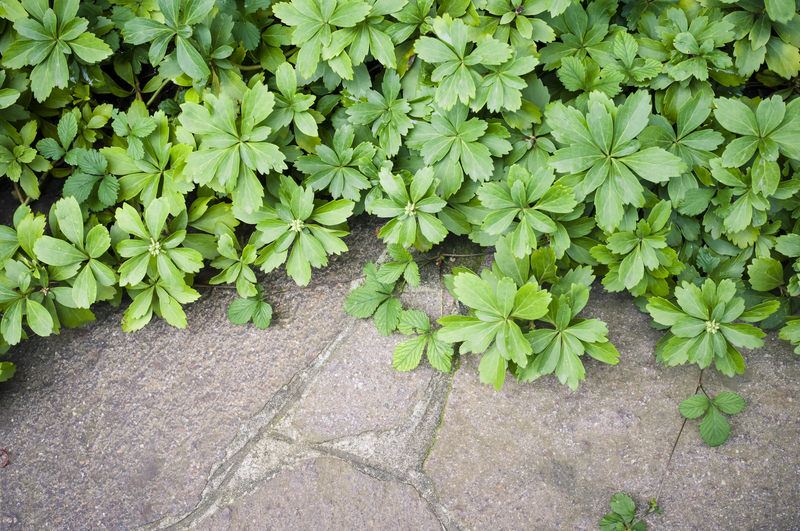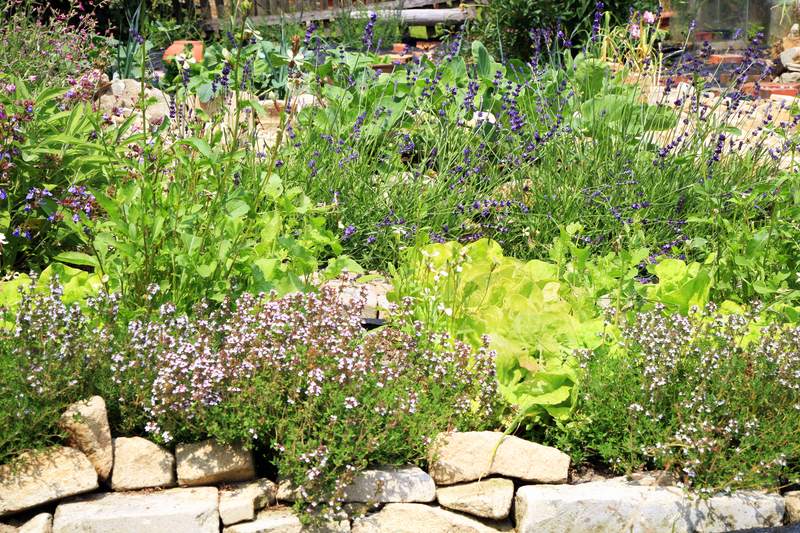Beginner-Friendly Steps to Achieving a Stunning Backyard Lawn
Are you dreaming of a lush, green retreat right outside your door? If you're new to lawn care, navigating all the advice out there might feel overwhelming. Luckily, with a little guidance, anyone can transform a patchy backyard into a stunning backyard lawn. In this comprehensive, easy-to-follow guide, we'll walk you through beginner-friendly steps for creating and maintaining a beautiful backyard oasis you'll be proud to show off.
Why a Stunning Backyard Lawn Matters
A vibrant green lawn does more than boost curb appeal. It provides a refreshing play area for children and pets, improves air quality, and offers a serene spot to relax or entertain guests. Whether you start with bare dirt, struggling grass, or just want a thicker, greener carpet, you're in the right place.

Assessing Your Current Backyard Lawn
Before you dive into planting or reseeding, it's important to assess what you already have in your backyard. Ask yourself:
- What is the condition of my current lawn? Is it full, patchy, or mainly dirt and weeds?
- What type of soil do I have? Sandy, clay, or loam?
- Does my lawn get enough sunlight? Or are there areas with heavy shade?
Choosing the Right Grass for Your Stunning Lawn
Selecting the ideal grass variety is crucial for a resilient, beginner-friendly lawn. Factors to consider include climate, sunlight, and expected foot traffic.
- Cool-Season Grasses: Kentucky bluegrass, fescue, and ryegrass thrive in northern cooler climates.
- Warm-Season Grasses: Bermuda, zoysia, and St. Augustine are best for the South and hot regions.
- Shade-Tolerant Varieties: Fine fescues and St. Augustine grass handle less sunlight well.
_Be sure to buy quality seeds or sod from a reputable supplier. Local garden centers often suggest the best species for your backyard's location._
Step-by-Step Guide to Establishing a Lush Backyard Lawn
1. Prepare the Soil for Planting
Good soil preparation is the first step toward a healthy and gorgeous backyard lawn. Here's how you can prepare your soil:
- Remove Weeds, Rocks, and Debris: Use a rake or hoe to clear the area.
- Till or Aerate the Soil: Loosen the top 2-3 inches so roots can grow deeply.
- Add Nutrients: Mix in compost or topsoil to improve fertility and drainage.
- Test and Adjust pH: Most lawn grasses prefer a pH between 6.0 and 7.0.
Tip: A simple soil test kit from a garden center gives you quick results and guidance on nutrients your backyard soil may need.
2. Seeding or Sodding Your Lawn
Seeding is cost-effective and gives you many grass options. Sod offers instant beauty and is perfect for smaller or high-traffic spots. Your choice depends on budget, patience, and season. For a stunning backyard lawn, follow these steps:
- For Seeding: Spread seed evenly using a broadcaster; gently rake to cover seeds with soil. Water lightly but frequently until the grass is established.
- For Sodding: Lay sod strips snugly together; stagger seams like rows of bricks. Water immediately and keep moist until roots take hold (2-3 weeks).
_Tip: The best time to plant cool-season grasses is early fall or spring. Warm-season grasses thrive when sown in late spring or early summer._
3. Water Wisely
Proper watering is essential for a thriving backyard lawn. Here's what beginners need to know:
- Water Deeply, Not Daily: Deep watering encourages strong root growth. About 1 inch per week is ideal, best delivered in the early morning.
- Watch for Overwatering: Too much water promotes disease and shallow roots.
- Install a Sprinkler System: Automated systems help beginners maintain consistency, especially for bigger lawns.
Watering early in the day allows the grass blades to dry out, minimizing fungal disease and evaporation.
4. Fertilize for a Rich Green Lawn
Adding nutrients is key to achieving lush, vibrant grass. Use a fertilizer that's tailored to your grass type and local climate. Here's what to consider:
- Start with a Starter Fertilizer: Especially if you've just seeded or sodded.
- Follow a Regular Schedule: Most lawns benefit from 2-4 feedings per year, especially in spring and fall.
- Slow-Release Formulas: Provide nutrients over several weeks, reducing the chance of fertilizer burn.
_Tip: Always follow instructions on the bag--more isn't better with lawn fertilizer!_
5. Mow Correctly for a Healthy Backyard Lawn
How and when you mow matters! Regular mowing encourages dense growth and a neat appearance. Keep these points in mind:
- Don't Cut Too Short: Removing only one-third of the blade each mow keeps grass healthy.
- Keep Mower Blades Sharp: Dull blades tear the grass, making it susceptible to diseases.
- Change Mowing Patterns: This helps grass blades stand upright and prevents ruts.
Let clippings fall - they return nutrients to your lawn and act as a free, natural fertilizer.
6. Control Weeds Naturally
The best weed control for a beautiful backyard lawn starts with a thick, healthy turf. To further fight back weeds:
- Use Pre-Emergent Herbicides: These stop weed seeds from sprouting (apply in early spring).
- Spot-Treat Stubborn Weeds: Use targeted products or pull them by hand.
- Keep Grass Healthy: Dense grass chokes out most weeds naturally.
_Tip: Avoid using chemical weed killers on young grass (wait until your new lawn is established)._
7. Troubleshooting Common Lawn Problems
Even the most attentive beginners encounter common lawn issues. Here's how to handle them:
- Patches or Thin Grass: Overseed bare spots and keep them moist until growth appears.
- Yellow/Brown Spots: Check for pet urine, over-fertilization, or compacted soil.
- Pest or Disease Issues: Identify the culprit and select a gentle, appropriate treatment.
If unsure, many local garden centers or county extension offices can diagnose and recommend beginner lawn solutions.
Beginner-Friendly Lawn Maintenance Tips
Once your backyard lawn is established, consistent care keeps it looking spectacular through every season. For ongoing beauty, remember:
- Keep up with regular mowing and watering routines.
- Monitor for weeds and pull them when spotted.
- Fertilize according to your grass's needs.
- Aerate compacted soil annually to boost oxygen and nutrient flow.
- Rake up heavy leaves in fall to prevent suffocation.
Enhance Your Stunning Backyard Lawn with Finishing Touches
For a breathtaking backyard, go a step further:
- Edge garden beds and walkways to define lawn boundaries.
- Install a lawn border or path for manageable, crisp lines.
- Incorporate landscaping with shrubs, flower beds, or low-maintenance groundcovers for added beauty.
- Add a seating area or fire pit to create an inviting, usable space.

Frequently Asked Questions: Stunning Yard Lawn for Beginners
- How long does it take to achieve a beautiful backyard lawn?
- From initial soil preparation through germination, expect 2-3 weeks for seeding and instant green with sod. With proper care, full maturity takes 1-2 growing seasons.
- How often should I water a new lawn?
- Water lightly and frequently (once or twice daily) until seeds sprout or sod is established. Then, transition to deep, infrequent watering.
- When can I mow my new backyard lawn?
- Wait until grass reaches 3 inches tall. Mow gently, making sure the mower blade is sharp.
- Should I hire a lawn care service?
- While professionals can help with tricky situations, most beginners can achieve stunning results by following these easy backyard lawn steps and doing regular maintenance.
Conclusion: Achieving Your Dream Lawn
Transforming your outdoor space is both rewarding and achievable--no matter your expertise level. Follow this beginner's guide to each phase of lawn creation and care, and soon you'll enjoy a stunning, vibrant, and envy-worthy backyard lawn that serves as a personal oasis for years to come.
Remember, patience and consistency are the real secrets to a beautiful backyard lawn. Begin today, and watch your landscape dreams come to life--one blade of grass at a time!